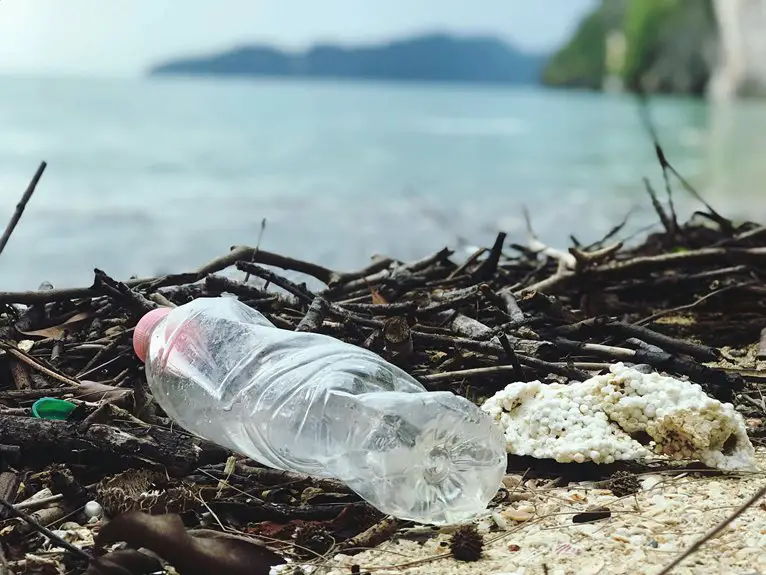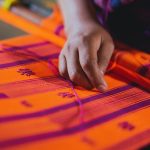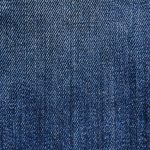Some might think that tackling water pollution from textile mills is too complex to address effectively, but significant strides are being made. Advanced technologies and sustainable practices are emerging, aiming to reduce harmful discharges and promote cleaner production. However, the journey is far from over, and understanding the ongoing efforts can shed light on the industry’s future and your role in it.
Table of Contents
Key Takeaways
- Advanced wastewater treatment technologies, such as Membrane Bioreactors and Zero Liquid Discharge Systems, are being developed to mitigate pollution from textile mills.
- Many textile brands are adopting sustainable practices, using eco-friendly materials and closed-loop systems to recycle water and reduce waste.
- Investment in waterless dyeing techniques is gaining traction, effectively eliminating harmful discharges associated with traditional dyeing processes.
- Public awareness campaigns and activism are encouraging consumers to support ethical brands that prioritize sustainable practices in the textile industry.
- Collaboration between industry players, NGOs, and governmental bodies is fostering the development of stricter regulations to ensure cleaner production methods.
Overview of Water Pollution in the Textile Industry
As you explore the textile industry, you’ll quickly realize that water pollution is a significant concern. The process of dyeing, finishing, and washing fabrics often involves harmful chemicals that end up in nearby water sources.
These pollutants can include heavy metals, dyes, and toxic solvents that not only affect aquatic life but also pose health risks to communities relying on these water bodies.
You might find that many textile mills discharge untreated wastewater directly into rivers and lakes, leading to alarming contamination levels.
Regulations exist, but enforcement can be lax, allowing this environmental issue to persist.
Environmental Consequences of Textile Water Pollution
You mightn’t realize how textile water pollution disrupts aquatic ecosystems, harming both wildlife and plant life.
It also poses serious health risks to communities that depend on contaminated water sources.
Additionally, the effects on soil degradation can impact agriculture, threatening food security and local economies.
Aquatic Ecosystem Disruption
When textile mills discharge untreated wastewater into rivers and lakes, they greatly disrupt aquatic ecosystems. The toxic chemicals, dyes, and heavy metals in the effluent can harm fish and other aquatic organisms, leading to decreased biodiversity.
You might notice fish populations declining and species struggling to survive due to the contamination. Additionally, these pollutants can alter the water’s pH levels and oxygen content, creating an inhospitable environment for many species.
As a result, food webs become imbalanced, impacting not just aquatic life, but also the birds and animals that rely on these ecosystems for survival. Addressing this pollution is vital to restoring and maintaining healthy aquatic habitats that support diverse life forms and guarantee ecological balance.
Human Health Risks
Although the environmental consequences of textile water pollution primarily affect aquatic ecosystems, they also pose significant risks to human health.
When you consume contaminated water or fish from polluted rivers, you expose yourself to harmful chemicals like dyes, heavy metals, and toxins. These substances can lead to serious health issues, including cancer, reproductive problems, and neurological disorders.
Additionally, if you’re living near textile mills, airborne pollutants may exacerbate respiratory conditions and skin irritations. Communities dependent on affected water sources face higher rates of illness.
It’s vital to recognize that these risks extend beyond the environment; your health and the well-being of your loved ones are at stake. Addressing textile water pollution is essential for safeguarding both ecosystems and human health.
Soil Degradation Effects
The impact of textile water pollution extends beyond human health and aquatic ecosystems, affecting soil quality and agricultural productivity as well.
When toxic chemicals from textile mills seep into the soil, they disrupt nutrient cycles and harm beneficial microorganisms. This contamination can lead to reduced soil fertility, making it harder for crops to thrive. You might notice that plants struggle to grow or produce lower yields due to these effects.
Additionally, heavy metals and pollutants can accumulate in the soil, posing long-term risks to food safety. As a result, the very foundation of our food system becomes compromised.
To combat this issue, it’s essential to address textile water pollution and implement sustainable practices in the industry, ensuring healthier soil for future generations.
Health Risks Associated With Contaminated Water
Contaminated water from textile mills poses serious health risks that can affect you and your community.
You might encounter waterborne illnesses or face exposure to harmful chemicals that can lead to long-term health issues.
Understanding these risks is essential for protecting your well-being and the health of those around you.
Waterborne Illnesses Impact
When textile mills release untreated wastewater into rivers and lakes, they create a breeding ground for waterborne illnesses that can severely impact public health.
You mightn’t realize the risks involved, but contaminated water can lead to serious health issues, including:
- Cholera: This bacterial infection can cause severe diarrhea and dehydration.
- Giardiasis: A parasite that leads to gastrointestinal distress and long-term digestive problems.
- Dysentery: Inflammation of the intestines resulting in severe diarrhea, often with blood.
- Hepatitis A: A viral infection that affects liver function and can spread easily through contaminated water.
Being aware of these risks empowers you to advocate for cleaner water practices and hold textile mills accountable for their wastewater management.
Chemical Exposure Risks
As textile mills discharge harmful chemicals into water sources, you face significant health risks that can arise from exposure to these pollutants. Contaminated water can lead to serious health issues, including skin irritations, respiratory problems, and long-term conditions like cancer. You may not realize the extent of these dangers until it’s too late.
Here’s a quick overview of some common chemicals and their potential health effects:
| Chemical | Health Risks |
|---|---|
| Azo Dyes | Skin allergies, cancer |
| Heavy Metals | Kidney damage, neurological issues |
| Formaldehyde | Respiratory problems, headaches |
Taking action against these pollutants is essential for protecting your health and well-being. Don’t underestimate the impact of chemical exposure from polluted water.
Community Health Consequences
Pollution from textile mills not only threatens individual health but also harms entire communities. When water sources become contaminated, you face a range of serious health risks.
These risks can affect you and your loved ones in various ways, including:
- Increased rates of waterborne diseases, like cholera and dysentery
- Long-term exposure to toxic chemicals, leading to chronic illnesses
- Reproductive health issues, which can impact future generations
- Mental health challenges due to stress and anxiety over contaminated resources
Addressing these health consequences is essential for community well-being.
Education and advocacy can help you and your neighbors push for cleaner practices in the textile industry, ensuring a healthier environment for everyone.
Together, we can work towards a safer future.
Regulatory Framework and Enforcement Challenges
While regulations exist to mitigate water pollution from textile mills, enforcement often falls short due to various challenges.
You might find that regulatory agencies struggle with limited resources, making it difficult to monitor compliance effectively. Additionally, the complexity of textile production processes can obscure the identification of pollutants, complicating enforcement efforts.
Many mills operate in regions with lax regulations or inadequate oversight, leading to inconsistent adherence to standards. Moreover, industry lobbying can influence regulatory frameworks, prioritizing economic growth over environmental protection.
As a result, you may notice that even when regulations are in place, the lack of stringent enforcement allows many mills to contribute to water pollution without facing significant consequences.
Addressing these challenges is vital for improving water quality and protecting communities.
Innovations in Wastewater Treatment Technology
Innovative wastewater treatment technologies are transforming how textile mills manage their effluents.
You’ll find that these advancements not only improve water quality but also promote sustainability.
Here are some key innovations making a difference:
- Membrane Bioreactors: Combining biological treatment with membrane filtration for high-quality effluent.
- Advanced Oxidation Processes: Using powerful oxidants to break down stubborn pollutants.
- Zero Liquid Discharge Systems: Ensuring that all wastewater is treated and reused, leaving no liquid waste behind.
- Bioremediation: Employing microorganisms to naturally degrade contaminants in wastewater.
Adoption of Sustainable Practices in Textile Production
As the fashion industry faces increasing scrutiny over its environmental impact, many textile producers are embracing sustainable practices to minimize their footprint.
You’ll notice that brands are now opting for eco-friendly materials, like organic cotton and recycled fibers, which greatly reduce water usage and pollution.
Additionally, producers are implementing closed-loop systems that recycle water during the dyeing process, ensuring less waste enters waterways.
You might also see factories adopting energy-efficient technologies and renewable energy sources, which cut down on carbon emissions.
In addition, some companies are investing in waterless dyeing techniques, which eliminate harmful discharges entirely.
The Role of Public Awareness and Activism
Public awareness and activism play essential roles in addressing water pollution from textile mills, as consumers increasingly demand accountability from brands.
When you engage in these movements, you contribute to significant changes in the industry. Here’s how you can make a difference:
- Educate Yourself: Learn about the environmental impacts of textile production and share this knowledge with others.
- Support Ethical Brands: Choose to buy from companies that prioritize sustainable practices and transparency.
- Participate in Campaigns: Join local or global initiatives aimed at reducing water pollution and advocating for cleaner production methods.
- Raise Your Voice: Use social media and community events to spread awareness and pressure brands to adopt better practices.
Your actions can help create a healthier environment for everyone.
Future Directions for Reducing Water Pollution in Textiles
Building on the momentum generated by public awareness and activism, the textile industry is now looking toward future strategies to tackle water pollution.
You’ll see a shift towards sustainable practices, including the adoption of eco-friendly dyes and closed-loop water systems. Companies are investing in innovative technologies that minimize water usage and treat wastewater effectively.
By collaborating with NGOs and governmental bodies, they’re developing stricter regulations and guidelines to guarantee compliance. You can expect to see the rise of circular fashion, where materials are reused, reducing the need for new resources.
Collaborating with NGOs and governments, the industry is fostering stricter regulations and embracing circular fashion to minimize resource use.
As a consumer, your choices will also drive change, as demand for sustainable products grows. Together, we can push the industry toward a cleaner, more sustainable future.
Frequently Asked Questions
How Does Water Pollution From Textile Mills Affect Local Economies?
Water pollution from textile mills harms local economies by damaging fisheries, reducing tourism, and increasing health care costs. You’ll notice businesses struggle when communities suffer, leading to job losses and decreased quality of life for residents.
What Are the Long-Term Effects of Water Pollution on Agriculture?
Water pollution can severely impact agriculture, reducing soil fertility and crop yields. You’ll notice diminished harvests and increased pest problems, which ultimately threaten food security and farmers’ livelihoods, leading to economic instability in affected regions.
How Can Consumers Identify Sustainable Textile Brands?
To identify sustainable textile brands, you should research their practices, look for certifications like GOTS, and read customer reviews. Checking the brand’s transparency about sourcing and production processes can also guide your choices effectively.
Are There Certifications for Eco-Friendly Textile Production?
Yes, there are certifications for eco-friendly textile production. You can look for labels like GOTS, OEKO-TEX, or Fair Trade. These certifications guarantee that the textiles meet specific environmental and social standards, helping you make informed choices.
What Role Do Governments Play in Promoting Sustainable Fashion?
When it comes to sustainable fashion, governments often hold the reins. They create regulations, offer incentives, and support initiatives that encourage eco-friendly practices, helping you and others make greener choices in the fashion industry.
- Comparing the Look of Ice Dye and Crumple Dye Side-by-Side - July 14, 2025
- How to Fold a Four-Leaf Clover for Tie-Dye - July 13, 2025
- The Easiest Way to Make a Halloween Pumpkin Tie-Dye - July 13, 2025





